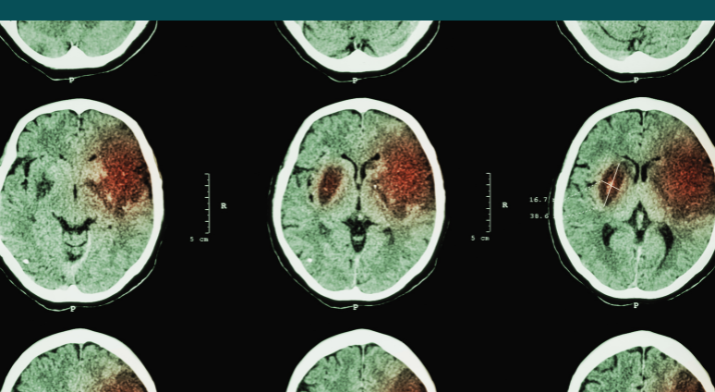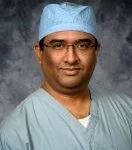Are You at Risk for a Stroke?
By: Crouse News
October 4, 2023
Home » Crouse Connects » Are You at Risk for a Stroke?
 Strokes are among the leading causes of death in the United States. Statistics reveal that approximately 800,000 people in the U.S. experience a stroke every year, which is about one person having a stroke every 40 seconds. Among those, one person succumbs to stroke every four minutes.
Strokes are among the leading causes of death in the United States. Statistics reveal that approximately 800,000 people in the U.S. experience a stroke every year, which is about one person having a stroke every 40 seconds. Among those, one person succumbs to stroke every four minutes.
In November 2022, legendary vocalist Christie McVie with Fleetwood Mac died as the result of an ischemic stroke, which occurs due to decreased blood flow to areas of the brain.
In some cases, there are no symptoms or indications leading up to one’s stroke. In other instances, individuals can bring their stroke risk under control with lifestyle and medication interventions.
Types of Strokes
Neurosurgeon Raghu Ramaswamy diagnoses and treats stroke using advanced techniques at Crouse Health. He explains that stroke falls into two main categories: ischemic and hemorrhagic. The former occurs when there is a lack of blood supply to the brain, typically caused by a clot that blocks blood flow carrying oxygen to the brain.
Hemorrhagic stroke involves bleeding in the brain. There are two subcategories of hemorrhagic stroke:
- intracerebral hemorrhage—bleeding within the brain tissue
- subarachnoid hemorrhage—bleeding on the surface of the brain
Dr. Ramaswamy says that ischemic strokes make up the largest proportion of strokes—close to about 85-87% of all strokes.
Recognizing Stroke Symptoms: FAST
When it comes to stroke, everything is a matter of time. Physicians and stroke awareness advocates have promoted the acronym B-E-F-A-S-T to describe the symptoms individuals should look for:
- B-loss of balance or coordination
- E-trouble seeing out of one or both eyes
- F-facial weakness or drooping
- A-arm weakness (or leg weakness)
- S-slurred speech
- T-time (call 911 immediately)
“Every minute a person is having a stroke, we are losing close to about 2 million neurons in the brain. That’s a lot of brain tissue loss. So, time is extremely important,” advises Dr. Ramaswamy.
Next Steps
When that call is made to 911, Dr. Ramaswamy says a number of informative facts can be helpful, such as age, name and medical history. If a list of medications is available, as well as prior medical conditions and/or allergies, that is also incredibly useful. The more information the hospital has before a person arrives, the better.
“What happens at Crouse when patients are brought in with a stroke or with a suspicion of stroke, everything else kind of stops. Stroke patients are fast-tracked towards treatment. They are very quickly assessed by the emergency department provider,” notes Dr. Dr. Ramaswamy. “The CT scanner stops doing scans on any other patients, and they are put on hold for scanning the stroke patients.”
Simultaneously, a neurosurgeon is enlisted to obtain a better understanding of what next steps need to occur. If a clot is involved, patients may be eligible for a clot-busting medication. Following the administration of this medication, patients undergo vascular imaging. This reveals if there is a large vessel occlusion—meaning one of the main arteries in the brain is blocked. If it is, patients are rushed to the interventional neuroradiology stroke unit where they undergo a procedure called a mechanical thrombectomy.
“In this procedure, we go into the brain with a catheter and remove the clot to open the arteries. We are aiming to do the whole process between the patients coming to the emergency department to the first time a therapeutic catheter meets the clot in less than 90 minutes. At Crouse, we generally try and hit between 60 to 65 minutes.”
Crouse Health: Dedication to Care and Compassion
At Crouse Health, the goal is to always provide the best care possible for any health condition—including stroke. Again, with stroke, the most important factor is fast action. However, that doesn’t mean there’s a lack of care and compassion.
“The whole team approaches the condition as fast as we possibly can,” says Dr. Ramaswamy, noting that patients and family members notice both the speed with which we deal with issues with compassion and care. That’s the simplest philosophy we use when addressing the needs of any patient with support for their loved ones.”

Crouse News is reported by members of our Communications Team.
Categories: Crouse Healthcast, Crouse Physicians, Crouse Services, Crouse Stroke Care
Share this
